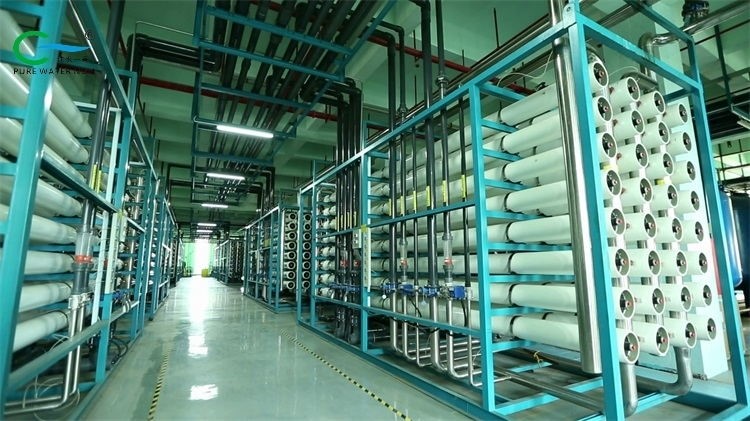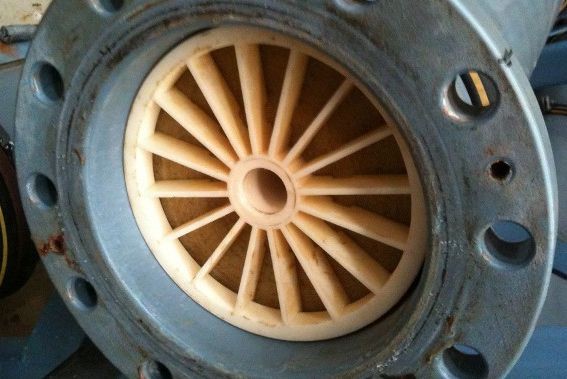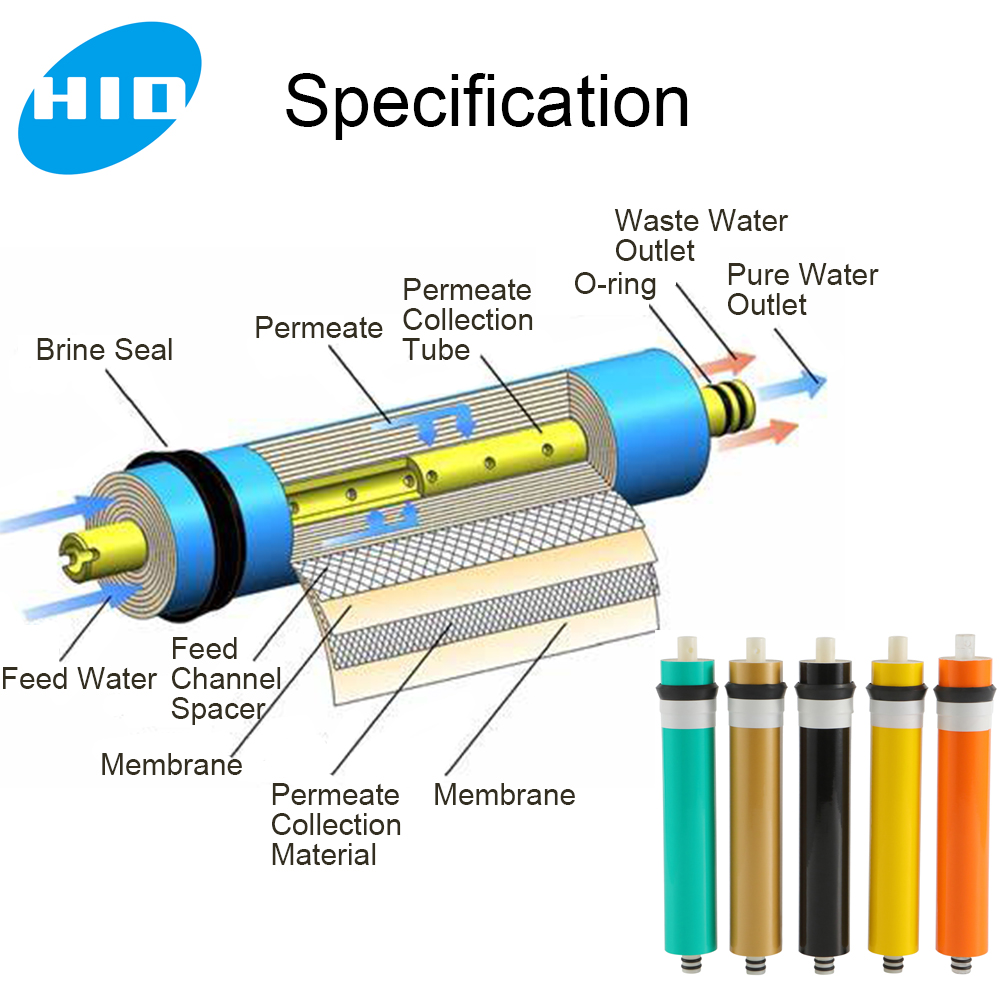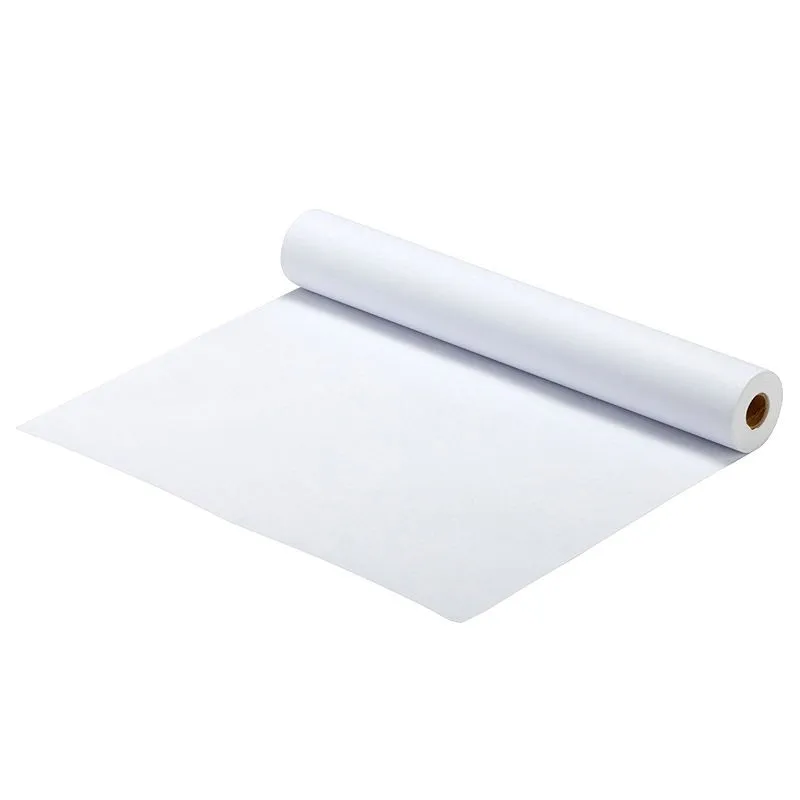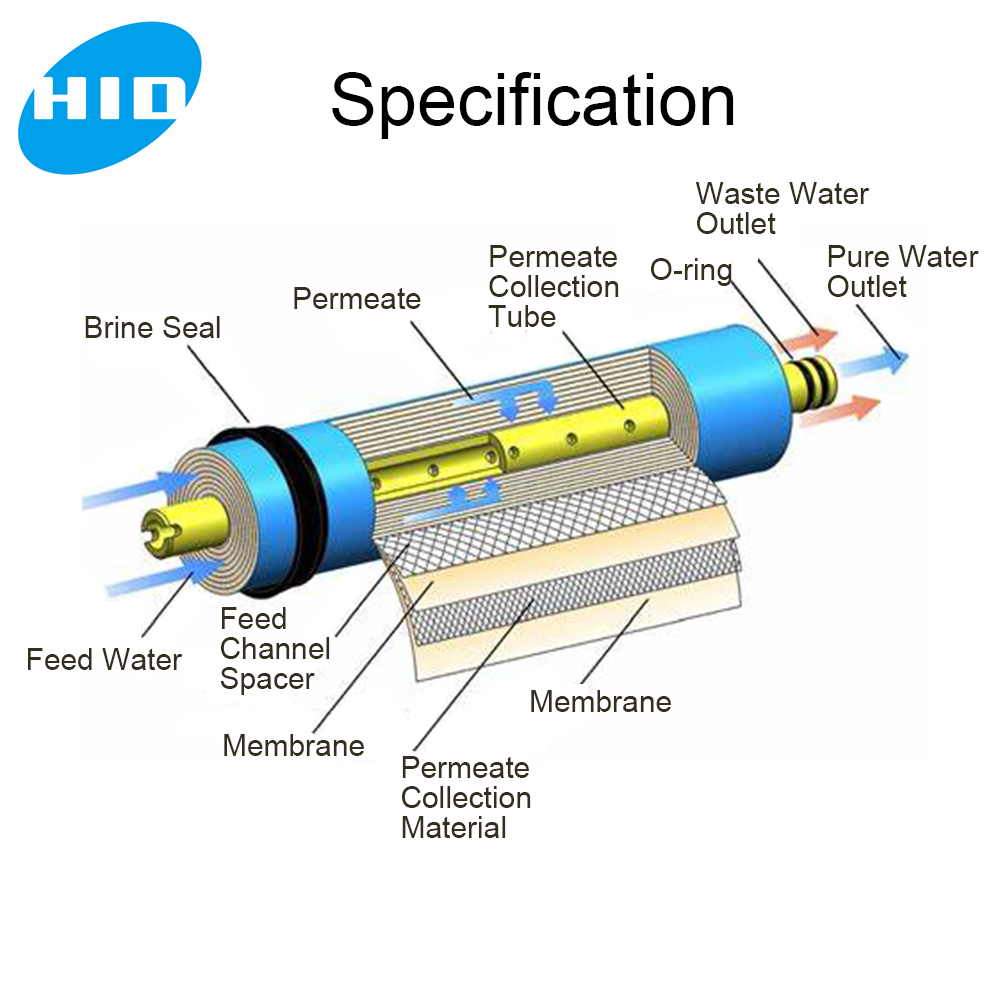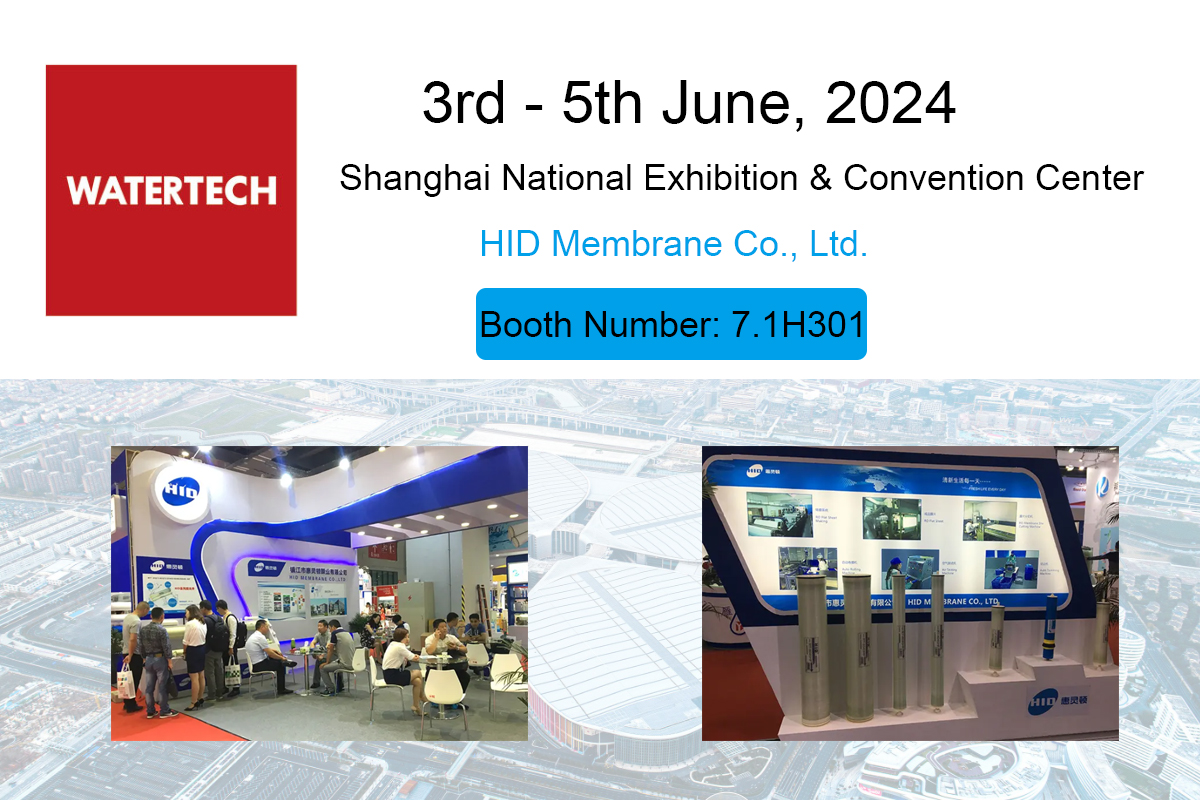How RO Membrane is made?
Reverse Osmosis (RO) is a common water treatment purification technology. By applying high pressure to the inlet water and reverse osmosis membrane, water flows from one side of the membrane (feed water side) to the other side (water production side).
Most of the other components in the influent, such as dissolved salts, particles, bacteria and pyrogen, will remain on the feed water side of the membrane and will eventually be discharged as wastewater.
In the natural state, the water on both sides of the semi-permeable film flows from dilute solution to concentrated solution, but when we apply a large enough pressure on the concentrated solution side, the water will flow in the reverse direction of the concentrated solution → dilute solution, and the flow direction of the solvent is opposite to the direction of the original penetration, so it is called reverse osmosis.
The reverse osmosis system is divided into an external membrane housing and an internal roll reverse osmosis membrane.
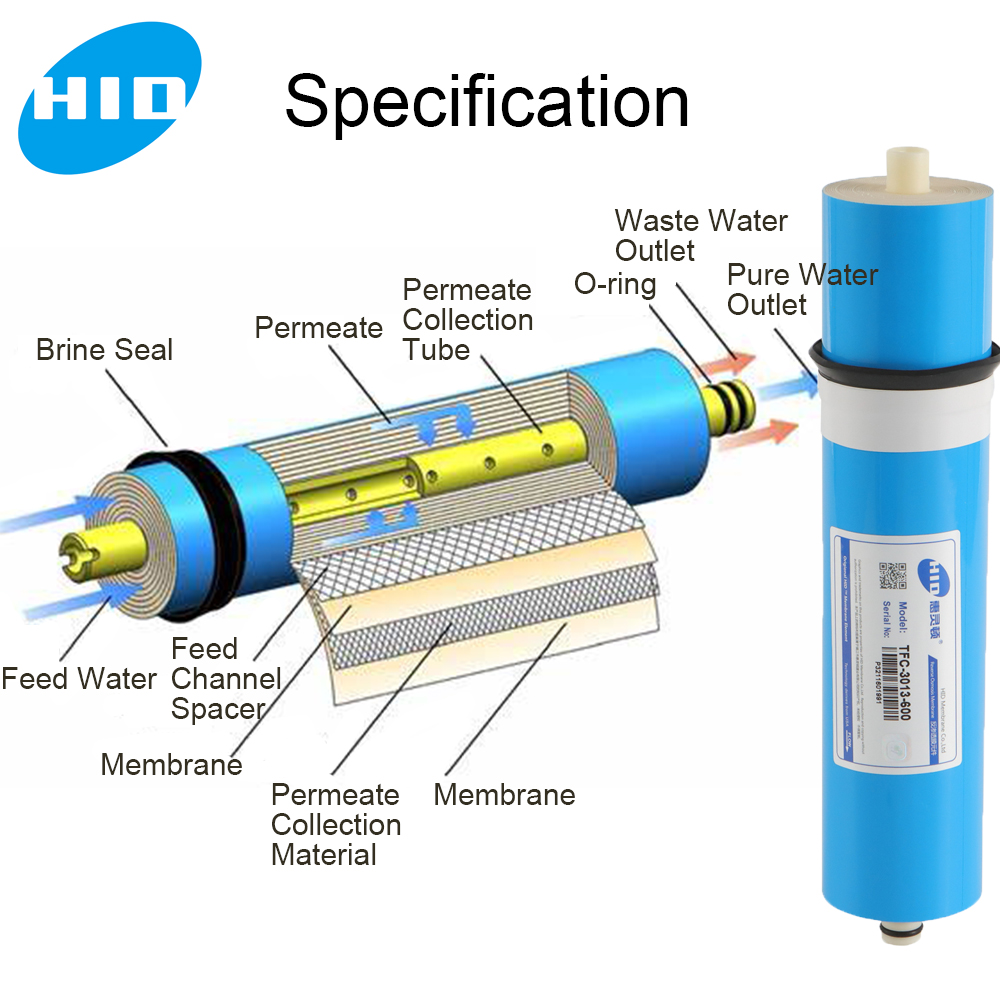
As shown in the figure, the common reverse osmosis membrane is mainly divided into five structures: both ends of the cap, the center tube, the O-ring seal, the reverse osmosis membrane, and the water intake/water production grid.
Multiple reverse osmosis membranes are overlapped with the water production/intake grid, one by one, their edges are sealed with glue, and then the whole is wound on the center tube. Among them, the grid layer: provides the channel for raw water inflow and production water outflow, preventing the adhesion of RO membrane, reverse osmosis membrane: desalination and filtration of influent water.

